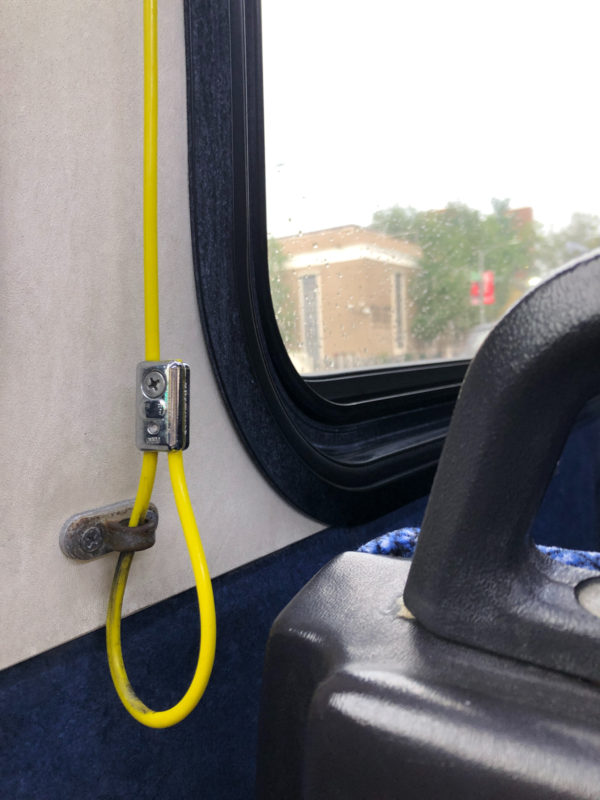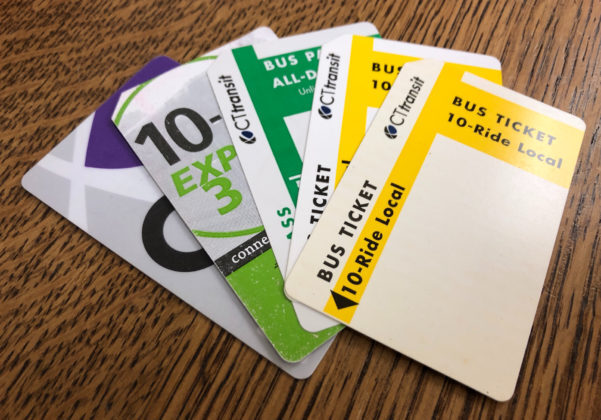When you’re in Connecticut but West Coast wildfire smoke gets in your eyes, you must be feeling motivated to do something to slow the rate of climate change. This isn’t 1969 or even 2009: “recycling more” no longer cuts it as enough for one person to do.
There are many resources out there giving suggestions for different levels of action, but the one that Real Hartford will be promoting for the next two months saves you money, makes you healthier, allows for opportunities to socialize, and puts you in tune with nature, all while reducing your carbon footprint. As far as individual actions go, it is the second most impactful thing you can do. Many people say they want to do it, but then don’t. This series will provide guidance and answer questions so that those who want to do meaningful work in healing the planet can begin living their values through choosing to be car-free or car-lite.
Why? Because if you search “car-free how to” the first page of results shows you how to get a free car, not how to live free from having a car. I had to go five pages into search results before finding anything remotely relevant.
Why? Because social norms dictate that those who do not have personal vehicles — and live basically anywhere in the United States except Manhattan — are among the downtrodden. They are to be pitied or scorned. They are to be treated with suspicion. The assumption made often is that a person lost her or his license, not that she or he has opted out of car culture. This persists even though we have had pop culture showing alternatives. Take, for instance, the protagonist of Murder She Wrote who solved murders in her tiny town, and elsewhere, despite being car-free. Between cycling and walking, taking a bus, and carpooling, she got everywhere she needed to go. There was an episode where she got behind the wheel of a car — she was curious about this autonomous vehicle — and all kinds of disaster ensued. If an older woman in Smalltown U.S.A. can manage, why are we told it’s impossible? Then, we see the other side of this with Sex and the City. Yes, it’s a New York City example, but of the four main characters, only one even has a driver’s license, and we only see her behind the wheel of a car in special episodes where the women rent a car while leaving town, and each time, there’s some hassle involved. Portraying upwardly mobile women who have it all, they manage just fine without car ownership. There’s the more recent Schitt’s Creek in which the family suddenly stripped of their wealth walks, bikes, or relies on rides until they get one car to share among four adults. They make it work. We seem to think there are no models, yet there are — we just have trouble seeing them among the sheer inundation of messaging that we can’t possibly live without this thing that, on average, can cost around $10,000 per year.
This series will cover everything from grocery shopping to entertainment to what happens when it snows. You don’t need to be a jock. You don’t need to spend thousands of dollars on accessories. You don’t need loads of unscheduled time.
This series is for those who are already wanting to do this, but who have yet to take the first steps (or pedals).
The only assumption made is that the reader wants to make this change and has chosen to live in line with her or his values enough that the daily commute and routine errands can be accomplished without a car. If you are participating in rural gentrification, that’s on you.
But for now, a few basics.
As goNewHavengo says, “think outside the car.” Yet, living free of a personal motor vehicle is not revolutionary by a long shot. Something like 36% of households in Hartford do not own cars. By going car-free or car-lite, you are not even close to being a pioneer. Many of those ahead of you work, have children under age 18, and are single parents. Repeat: many people are already doing this.
The first thing you will need is a thick skin — especially if you are walking or cycling. People will honk at you. People will yell at you from cars, whether you are following the law or breaking it. Doesn’t matter. Figure out how you want to manage this. Well-meaning acquaintances will describe your choice as a “problem” and give you pitying looks when arriving by bus directly across the street from your destination, asking you how the experience was, as if you endured physical pain. If searching for a job, be aware that ignorant HR departments might try to screen you out as a candidate because they believe that using public transportation makes a worker unreliable. You will become acutely aware of how much small talk revolves around people discussing parking. Decide for yourself how to respond.
Anyway, start out with experimentation. Try a different mode one day of the week. Pick a day when you don’t have a meeting first thing. Then try another the following week. See what it’s like to start and end your week by commuting someway other than by car. Do you feel more energized? Are you less inclined to crumpling on the couch right after work? Are you in awe of whole cultures you weren’t even aware of? Feeling a stronger sense of unity after needing to yell “back door” on behalf of a fellow bus rider? Look at the local system map to see if there are bus routes you were not aware of. The closest one might not offer the most frequent service.

Quick and Dirty Basics for Taking the Bus
- Go to the CTtransit website to get all the payment options spelled out for you. Think this might be your new mode? Get a Go CT Card, which you can use as a tap card or phone app. No more scrounging up spare change or buying a daily pass. The card is refillable. You can check your balance easily. If you misplace/lose your card, you can freeze it; can’t do that with a 31-day pass!
- Bring headphones and listen to music, read a book, or just play on your phone if you are not up for chatting with other passengers. There is the opportunity to be social, but you can also be in your own little world, meditating if you so choose. Just don’t meditate so hard that you miss your stop.
- Masks are required as of time of publication. You will want to wear one…possibly two, depending on how popular of a route you are on. Bring your own hand sanitizer.
Quick and Dirty Basics for Cycling
- A good used bicycle is probably better than a new one from a department store, but the bicycle you’ve got is better than the one you don’t. In other words, don’t put off riding because you don’t have your dream bike. Take it to a bicycle shop for a tune up and to have the saddle (seat) adjusted. Most people set the seat way too low and end up putting in far more effort than necessary to pedal. You’ve seen people riding with their knees jutting out…not so great on the knees!
- There is a whole culture of people who insist that cyclists know how to change their own tires and do other maintenance. If you like D.I.Y. projects, fine, but nobody is this insistent that drivers change their own oil and replace their own transmissions. You want to throw money at the problem and spend your time doing something else? Nothing wrong with that. There is toxic masculinity everywhere, unfortunately, and cyclists are not immune.
- Wear comfortable clothes. That means whatever is comfortable for you. I have done long rides (20+ miles) in jeans. I’ve done them in skirts. I’ve done them in “bike clothes.” The only strong preference of mine is to stay away from jeggings, and I’m not going to elaborate on that. If you find Lycra comfy, rock it. Personally, I’m not a fan. You might love it.
- Check that your skirt does not get stuck in the brakes or spokes. Skirt and chain guards help with this. A short term solution may be to roll the top of the skirt until the length no longer reaches the spokes. I’m pretty modest in every other way, but I do not worry about this when riding because of the trade off — drivers absolutely can’t claim they didn’t see someone riding in a skirt. I’d argue that a black skirt adds as much to a cyclist’s visibility as hi-vis cycling clothes. Maybe someone could study this.
- Besides the bike, lights and a damn good lock are the only pieces of equipment that I would say are needed. The bike lights are less about helping you see at night, and more about making you visible. If a helmet makes you feel safer, go for it, but make sure you are wearing it the right way if you’re going to bother. That means the helmet should be level, low on your forehead, and the straps snug. An unbuckled helmet is probably not going to stay on in a crash.
- You can throw a water bottle into a bag. Install a bottle holder on the bicycle only if that’s something you want, knowing that road grime will wind up on it.
Quick and Dirty Basics for Walking
- Get those gel or foam insert things for your sneakers if you aren’t into sporty sneakers.
- Leave yourself enough time to have impromptu conversations with new friends or to stop and pet all the cute dogs.
Will you be spending more time than usual outdoors? Sunscreen.
Next week, I’ll be providing tips about one of the perceived obstacles people face when making the switch to a car-free life: grocery shopping. See you next Tuesday!


Jim Head
This is a great summary & perfect weather to try out alternative transportation options.
Another option to the CT Go card is a 10-ride pass. I believe 10-ride passes can be purchased at more locations (like Stop & Shop). These are also nice because the expiration date is years into the future and are a decent rate ($15.75 / 10 trips) as opposed to $1.75/ trip so if trying out the bus on initially a limited basis, it’s a good deal. When swiping, ask for a 2-hour transfer if your trip requires multiple buses.
Chris D
Hot tip for cycling: if you ever forget that “you’re not a car”, fear not! Many drivers will happily remind you – and very loudly too, to make sure you hear that reminder!